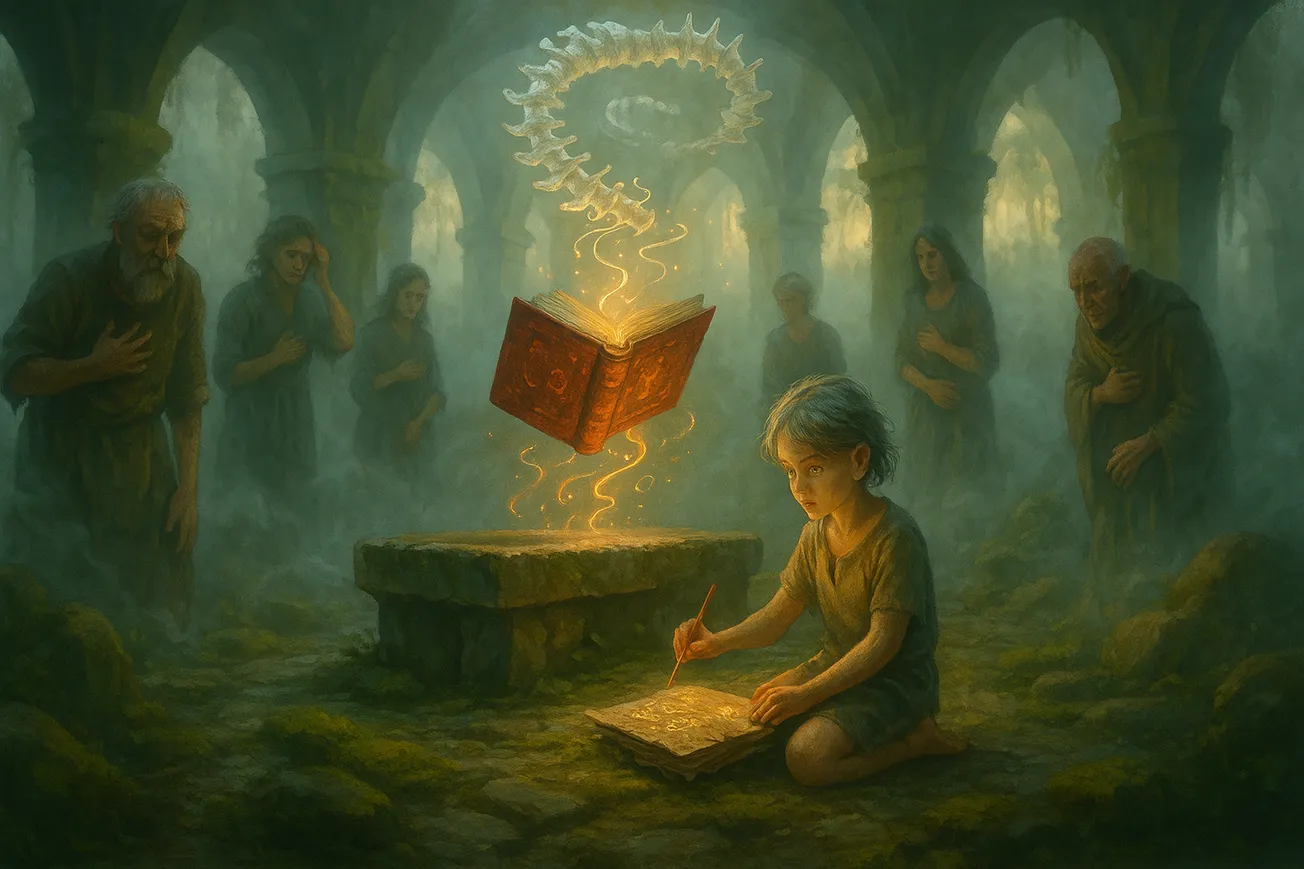🌈 The Fractal Story Engine | Body & Death | (12) BD-001-D1
The crimson book remained where it had fallen, open to a page no one could read. The glyphs shifted as if breathing, soft with their own strange hunger, glowing in pulses that echoed the heartbeat of the village itself. Adults averted their eyes. Some claimed they saw faces in the script. Others felt a pressure behind the temples, like a memory trying to be born.
But the child was small, quiet, with skin like dusk and eyes like river glass. They did not look away.
They came every morning, barefoot and wordless, and knelt before the book as one might kneel before the sea. Their name was not spoken often, for the villagers feared to speak of what could not be understood. Born without the ability to feel pain, they had once been seen as blessed. Now, they were watched as one might watch a flicker in the corner of the eye, unsure if it was a trick of the light or a rift in the veil.
With a charcoal nub and sheets of pressed bark, the child began to copy what the book offered. Not with precision, but with a kind of sacred mimicry. Their hand moved in patterns that did not follow language, yet each mark radiated something felt but unnamed. A teacher wept upon seeing a single page. A farmer collapsed, clutching a stomach that bore no wound. An old woman whispered her dead husband’s name, then forgot she had ever been married.
These were not accidents. These were transmissions.
Within days, the writings spread. Pages were tucked into doors, slipped beneath pillows, tied to tree branches with twine. And with them came invisible injuries: bone-deep aches, phantom burns, tremors that had no source. Yet no one destroyed the pages. They feared them, yes, but they also sensed something ancient waking within.
Some wounds could not be healed until they were made visible.
The village healer, Mira, confronted the child. “You must stop,” she said, though her voice trembled with uncertainty. “You are opening doors we buried for a reason.”
The child looked up at her, blinking slowly, as if trying to feel the weight of her words without the compass of pain. Then they reached for Mira’s wrist and pressed a page against her palm.
On it was a single spiral, inked in red sap.
Mira gasped, staggered, fell to her knees. She had not remembered the scream that once left her body on the day her child was taken by the river. But now the sound filled her mouth again, like a song returning home. She sobbed, not because it hurt, but because it fit. The shape of the grief was perfect. It had found its form.
And somewhere beyond the trees, beneath a layer of mist thick as breath, the Archivist’s spine twitched.
It rose like a serpent uncoiling, vertebrae glowing faintly, pulsing in rhythm with the glyphs. No body returned with it. Only the memory of a posture once held. A scaffold for sorrow. A suggestion of presence.
That night, the glyphs turned blue.
The child did not sleep. They sat beside the book, tracing the curve of each new shape, whispering to no one. Or perhaps to the bones beneath the earth. The language had shifted again, and now each word bore a name: Ageless Ache, Mirrorbone, The Ache That Follows Joy.
The villagers began to call these names aloud.
They stood in fields and on rooftops, by wells and beside their sleeping children, and they named what they had never known how to touch. Some names tasted like iron. Others smelled of rain on old stone. Some left bruises on the tongue. But every name made something more bearable.
Still, the child did not speak.
They only wrote.
And as dawn peeled itself across the sky, the spiral spine lifted fully into the air and began to orbit the book. The villagers watched in silence. For they knew now: the Archive was never a place.
It was a person.
And perhaps it had chosen a new vessel.

